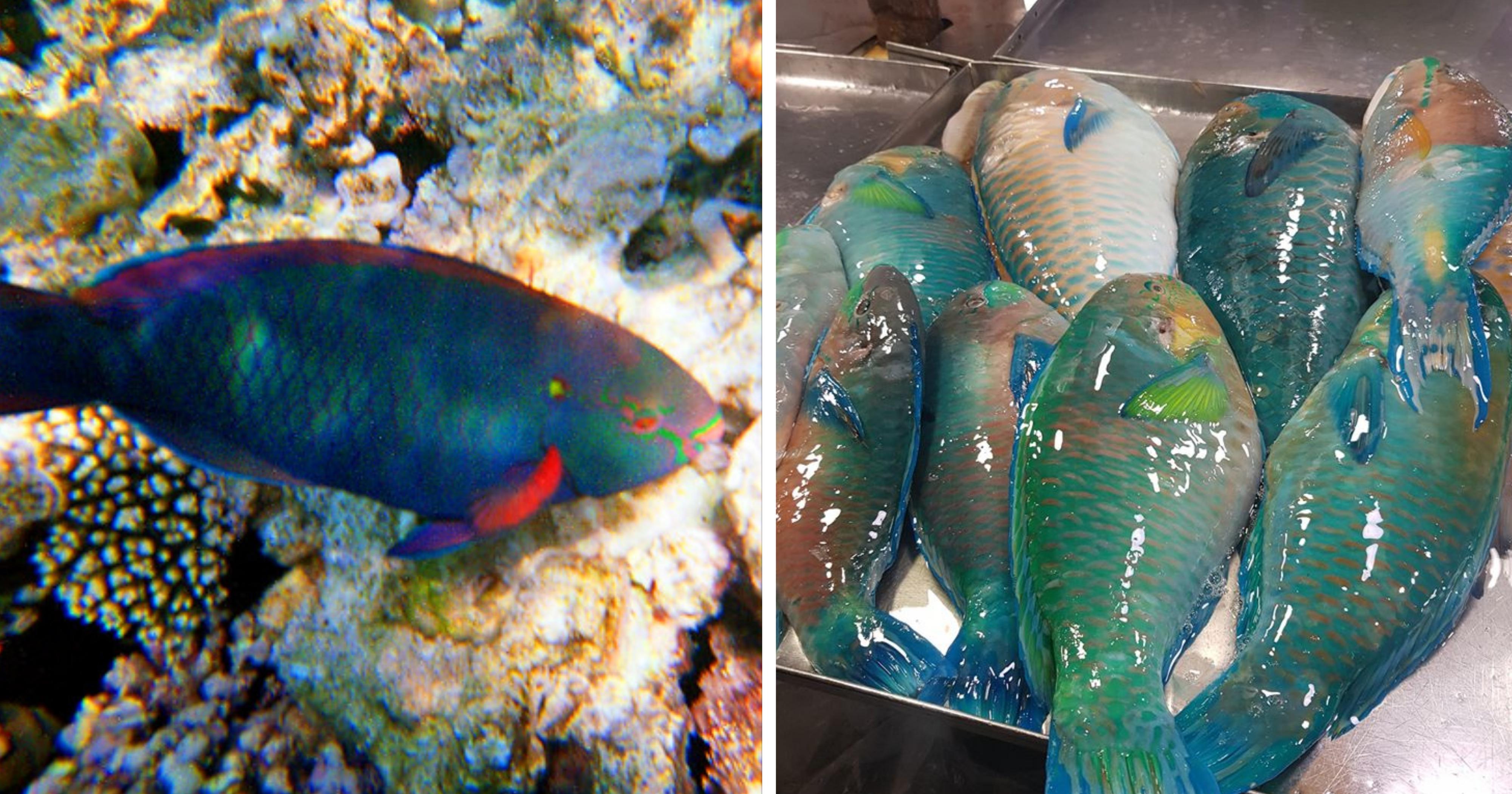

The sand that is produced by parrotfish forms beaches and provides valuable habitat for benthic organisms like crabs and shrimp. The ground-up coral is passed through their digestive tract and expelled as fine-grain white sand (SF Fig. Parrotfish have a special set of toothplates in their throat called a pharyngeal mill ( pharyngeal = relating to the pharynx or throat) that acts like additional teeth to assist in grinding up the hard coral. During this scraping while foraging for algae, parrotfish often ingest chunks of coral. This fusion enables them to scrape off fine, filamentous algae that grow within coral skeletons and on dead coral substrates. Parrotfish teeth are fused together (SF Fig. Parrotfish have unique teeth that allow them to play an integral role on coral reefs, especially in the Caribbean and Indo-Pacific. Parrotfish and other reef herbivores help to maintain the structure and function of coral reefs by grazing algae that might smother coral. This fish is excluded from the Compatibility Checker as it is unsuitable for community aquariums or may require expert care.Approximately 90 different species of parrotfish (family Scaridae) are found throughout the world in shallow subtropical and tropical oceans. If you already have Parrot Fish, they should be cared for in the best possible way, as you would any other fish. Do not support this activity by purchasing these fish there is a vast number of natural fish species to choose from and no need for human interference of this kind. If you see these fish for sale we urge you to print this page and show it to the offending shop, and take your custom elsewhere if they continue to stock these fish. It is the opinion of Think Fish that the practice of producing fish such as the Parrot Fish is unethical, cruel and has no place in modern fishkeeping.

The history of the production of the parrotfish is vague although it is safe to assume that the practice of crossing fish species produces a number of deformed fish, of which most would be culled. As this fish should not be sold, or kept, in aquariums, it is not included in the compatibility checker below. These deformities give the fish difficulties in feeding and swimming.īecause the Parrot Cichlid has varying degrees of deformity and genetics, its behavior is unpredictable. The Parrot Fish exhibits a number of deformities including a bent spine, miss-shaped and small mouth, and organ deformities such as a malformed swim bladder. The Parrot Fish is not a natural fish but is a man made cross between several cichlid species, a practice that presents many ethical concerns. Use our fish community creator tool to plan your tank set up and ensure that the Parrot Fish / Cichlid is the right fish for your aquarium. Parrot Fish / Cichlid Tropical Fish Learn all about the Parrot Fish / Cichlid's feeding habits and food types, its behaviour, its origins, its natural habitats, is it male or female, breeding advice and information, suitable tank mates, its sizing and growth range, minimum tank size, water PH and more.

Parrot Fish / Cichlid ( No scientific name)


 0 kommentar(er)
0 kommentar(er)
